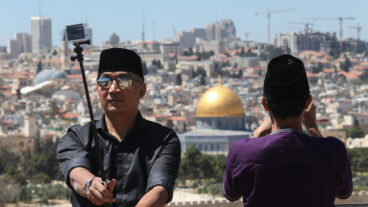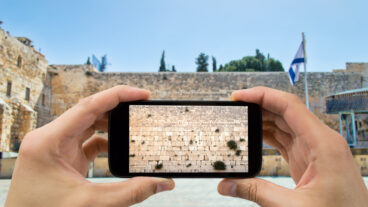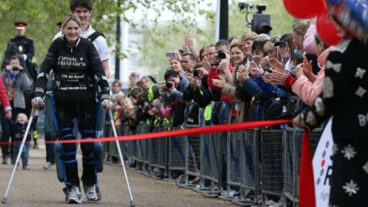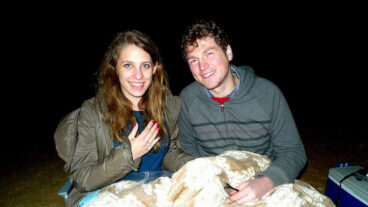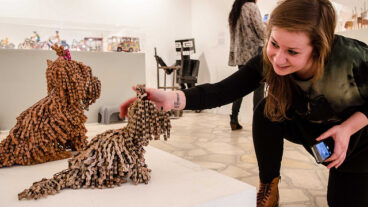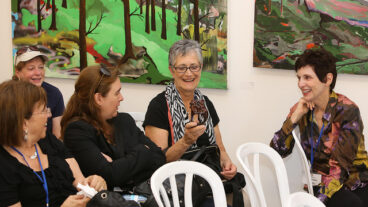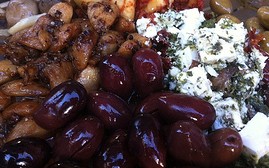By looking inward, Israeli and Arab societies could heal their internal wounds.When I was a boy, my great-uncle Dai used to get drunk at Christmas and drop his trousers to show my scandalized aunts the scar on his buttock. A Turkish bullet struck him as he and his brother secured the road north of Jerusalem in 1917 with the Imperial Camel Corps. My grandmother kept a postcard they’d written back then. It read: ‘Dear Sis, There’s nothing here but camels, sand, and shit.’
I arrived in Israel eight years ago to find a considerably more advanced place. During the years of the Oslo Peace Process, many of the stories I wrote as a foreign correspondent focused on new developments in medicine and science from Israel’s burgeoning high-tech sector. When Time magazine hired me as Jerusalem bureau chief in 2000, some editors thought I’d spend most of my time covering Israeli advancements in the technology sector, rather than the conflict between Arabs and Jews that had raged more or less unceasingly since my two great uncles rode through on their camels.
I soon realized that no matter how impressive the technology and business methods of the Israelis, there were deep divisions within their society that prevented them from reaching a peace that would enable them to focus on their startling technological developments. Until the divisions within Israeli society were addressed, the conflict would continue.
In my new book, Cain’s Field: Faith, Fratricide, and Fear in the Middle East (Simon and Schuster), I write that “from Lawrence of Arabia to Bill Clinton, Westerners applied their apparently logical perceptions of the conflict to a potential resolution, colored by romantic notions of the noble desert Bedouin or an evangelical inspiration to succor the biblical Hebrews in their homeland. These solutions failed because they missed something.”
That something, I believe, is the terrible insecurity that afflicts both Israeli and Palestinian society. Until Israelis can feel secure about their own ability to live together, they can’t take the risk to make a real peace with the other side. The same is true of Palestinians, whose leaders find it impossible to turn away from violence as a way of pressuring Israel – and controlling their own people.
It struck me that while Israelis displayed an astonishing ability to think out of the box in technological matters, in social and political terms they were entirely unable to confront the conventional thinking with a skeptical eye.
I began my book with the tale of a member of Hamas who is wanted both by Israel, for his hand in numerous attacks against Jews, and by the Palestinian Authority, for the revenge killing of a police officer who murdered his brother. It’s a story of one man slowly learning that the straightforward realities he believed were at the root of his people’s struggle are more confused than he thought, dirtied by the corruption of people at the top. In the end, the only solution he can find is to kill one of his compatriots.
In Cain’s Field I concentrated each chapter on one or two individuals with whom I’ve had personal contact, from an Arafat henchman to a bereaved Israeli settler and one of Tel Aviv’s most popular rock stars. Their stories tell truths about the chaos at the hearts of these peoples. But I felt it was important that my book also offer hope – that by turning the spotlight inward, these societies might heal their internal wounds, and move towards a peaceful future.
Most foreign correspondents roll through the Middle East at the most for four or five years, and usually only a few months. By the time they start to sense the superficiality of most news coverage in the region and to understand the way historic injustices spread their tentacles through every layer of society, it’s time for them to move on to another posting. I’ve been in Jerusalem eight years, and I’m still here.
I spent years in the dusty streets of Gaza and the noisy synagogues of Jerusalem’s ultra-Orthodox neighborhoods, documenting the divisions between Israelis and other Israelis, and the rifts among the Palestinians.
I found that people on each side concede that their own society is deeply divided, but they argue that those problems will have to wait until the big conflict with the other side is resolved. It’s an easy dualism that most reporters slot into the simple formulas of journalism. But I saw that the internal divisions of Israeli and Palestinian society actually made it impossible to resolve the conflict between the two sides -in fact, they perpetuated it and made it even worse.
Neither side of this conflict can make the other side change. But by applying the inventiveness that Israelis have shown in science, health and technology to society and politics, they can change their own societies and, in doing so, they can bring peace closer.




